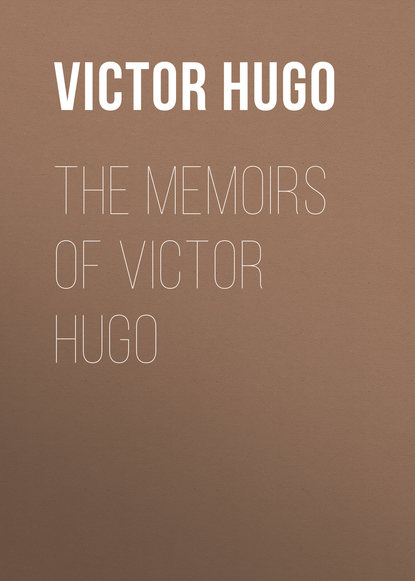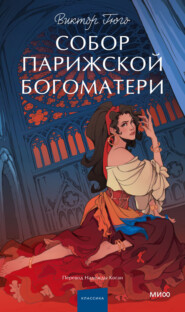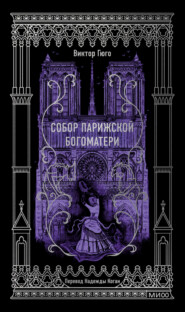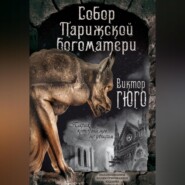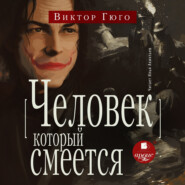По всем вопросам обращайтесь на: info@litportal.ru
(©) 2003-2024.
✖
The Memoirs of Victor Hugo
Настройки чтения
Размер шрифта
Высота строк
Поля
“That,” said he, “is Charles X.‘s coronation carpet.”
I stood gazing at the thing, and as I did so – I am telling truthfully what occurred – there was a deafening report that sounded like a thunder-clap, only it came from below. It shook the timber-work and echoed and re-echoed through the church. It was succeeded by a second roar, then a third, at regular intervals. I recognised the thunder of the cannon, and remembered the gun I had seen in the square.
I turned to my guide:
“What is that noise?”
“The telegraph has been at work and the cannon has been fired.”
“What does it mean?” I continued.
“It means,” said the beadle, “that a grandson has just been born to Louis Philippe.”
The cannon announced the birth of the Count de Paris.
These are my recollections of Rheims.
RECOUNTED BY EYE-WITNESSES
I. THE EXECUTION OF LOUIS XVI
There were certain characteristic details connected with the execution of Louis XVI. that are not recorded in history. They were recounted to me by an eye-witness[1 - This eye witness was one Leboucher, who arrived in Paris from Bourges in December, 1792, and was present at the execution of Louis XVI. In 1840 he recounted to Victor Hugo most of these details which, as can easily be imagined, had impressed themselves deeply upon his mind.] and are here published for the first time.
The scaffold was not, as is generally believed, erected in the very centre of the Place, on the spot where the obelisk now stands, but on a spot which the decree of the Provisional Executive Council designates in these precise terms: “between the pied d’estal and the Champs-Elysées.”
What was this pedestal? Present generations who have seen so many things happen, so many statues crumble and so many pedestals overthrown do not quite know what meaning to give to this very vague designation, and would be embarrassed to tell for what monument the mysterious stone which the Executive Council of the Revolution laconically calls the “pied d’estal” served as a base. This stone had borne the statue of Louis XV.
Let it be noted en passant that this strange Place which had been called successively the Place Louis XV., Place de la Revolution, Place de la Concorde, Place Louis XVI., Place du Garde-Meuble and Place des Champs-Elysées, and which could not retain any name, could not keep any monument either. It has had the statue of Louis XV., which disappeared; an expiatory fountain which was to have laved the bloody centre of the Place was projected, but not even the first stone was laid; a rough model of a monument to the Charter was made: we have never seen anything but the socle of this monument. Just when a bronze figure representing the Charter of 1814 was about to be erected, the Revolution of July arrived with the Charter of 1830. The pedestal of Louis XVIII. vanished, as fell the pedestal of Louis XV. Now on this same spot we have placed the obelisk of Sesostris. It required thirty centuries for the great Desert to engulf half of it; how many years will the Place de la Revolution require to swallow it up altogether?
In the Year II of the Republic, what the Executive Council called the “pied d’estal” was nought but a shapeless and hideous block. It was a sort of sinister symbol of the royalty itself. Its ornaments of marble and bronze had been wrenched off, the bare stone was everywhere split and cracked. On the four sides were large square gaps showing the places where the destroyed bas reliefs had been. Scarcely could a remnant of the entablature still be distinguished at the summit of the pedestal, and beneath the cornice a string of ovolos, defaced and worn, was surmounted by what architects call a “chaplet of paternosters.” On the table of the pedestal one could perceive a heap of debris of all kinds, in which tufts of grass were growing here and there. This pile of nameless things had replaced the royal statue.
The scaffold was raised a few steps distant from this ruin, a little in rear of it. It was covered with long planks, laid transversely, that masked the framework. A ladder without banisters or balustrade was at the back, and what they venture to call the head of this horrible construction was turned towards the Garde-Meuble. A basket of cylindrical shape, covered with leather, was placed at the spot where the head of the King was to fall, to receive it; and at one of the angles of the entablature, to the right of the ladder, could be discerned a long wicker basket prepared for the body, and on which one of the executioners, while waiting for the King, had laid his hat.
Imagine, now, in the middle of the Place, these two lugubrious things, a few paces from each other: the pedestal of Louis XV. and the scaffold of Louis XVI.; that is to say, the ruins of royalty dead and the martyrdom of royalty living; around these two things four formidable lines of armed men, preserving a great empty square in the midst of an immense crowd; to the left of the scaffold, the Champs-Elysees, to the right the Tuileries, which, neglected and left at the mercy of the public had become an unsightly waste of dirt heaps and trenches; and over these melancholy edifices, over these black, leafless trees, over this gloomy multitude, the bleak, sombre sky of a winter morning, and one will have an idea of the aspect which the Place de la Revolution presented at the moment when Louis XVI., in the carriage of the Mayor of Paris, dressed in white, the Book of Psalms clasped in his hands, arrived there to die at a few minutes after ten o’clock on January 21, 1793.
Strange excess of abasement and misery: the son of so many kings, bound and sacred like the kings of Egypt, was to be consumed between two layers of quicklime, and to this French royalty, which at Versailles had had a throne of gold and at St. Denis sixty sarcophagi of granite, there remained but a platform of pine and a wicker coffin.
Here are some unknown details. The executioners numbered four; two only performed the execution; the third stayed at the foot of the ladder, and the fourth was on the waggon which was to convey the King’s body to the Madeleine Cemetery and which was waiting a few feet from the scaffold.
The executioners wore breeches, coats in the French style as the Revolution had modified it, and three-cornered hats with enormous tri-colour cockades.
They executed the King with their hats on, and it was without taking his hat off that Samson, seizing by the hair the severed head of Louis XVI., showed it to the people, and for a few moments let the blood from it trickle upon the scaffold.
At the same time his valet or assistant undid what were called “les sangles” (straps); and, while the crowd gazed alternately upon the King’s body, dressed entirely in white, as I have said, and still attached, with the hands bound behind the back, to the swing board, and upon that head whose kind and gentle profile stood out against the misty, sombre trees of the Tuileries, two priests, commissaries of the Commune, instructed to be present, as Municipal officials, at the execution of the King, sat in the Mayor’s carriage, laughing and conversing in loud tones. One of them, Jacques Roux, derisively drew the other’s attention to Capet’s fat calves and abdomen.
The armed men who surrounded the scaffold had only swords and pikes; there were very few muskets. Most of them wore large round hats or red caps. A few platoons of mounted dragoons in uniform were mingled with these troops at intervals. A whole squadron of dragoons was ranged in battle array beneath the terraces of the Tuileries. What was called the Battalion of Marseilles formed one of the sides of the square.
The guillotine – it is always with repugnance that one writes this hideous word – would appear to the craftsmen of to-day to be very badly constructed. The knife was simply suspended to a pulley fixed in the centre of the upper beam. This pulley and a rope the thickness of a man’s thumb constituted the whole apparatus. The knife, which was not very heavily weighted, was of small dimensions and had a curved edge, which gave it the form of a reversed Phrygian cap. No hood was placed to shelter the King’s head and at the same time to hide and circumscribe its fall. All that crowd could see the head of Louis XVI. drop, and it was thanks to chance, thanks perhaps to the smallness of the knife which diminished the violence of the shock, that it did not bound beyond the basket to the pavement. Terrible incident, which often occurred at executions during the Terror. Nowadays assassins and poisoners are decapitated more decently. Many improvements in the guillotine have been made.
At the spot where the King’s head fell, a long rivulet of blood streamed down the planks of the scaffold to the pavement. When the execution was over, Samson threw to the people the King’s coat, which was of white molleton, and in an instant it disappeared, torn by a thousand hands.
At the moment when the head of Louis XVI. fell, the Abbé Edgeworth was still near the King. The blood spirted upon him. He hastily donned a brown overcoat, descended from the scaffold and was lost in the crowd. The first row of spectators opened before him with a sort of wonder mingled with respect; but after he had gone a few steps, the attention of everybody was still so concentrated upon the centre of the Place where the event had just been accomplished, that nobody took any further notice of Abbé Edgeworth.
The poor priest, enveloped in his thick coat which concealed the blood with which he was covered, fled in bewilderment, walking as one in a dream and scarcely knowing where he was going. However, with that sort of instinct which preserves somnambulists he crossed the river, took the Rue du Bac, then the Rue du Regard and thus managed to reach the house of Mme. de Lézardière, near the Barrière du Maine.
Arrived there he divested himself of his soiled clothing and remained for several hours, in a state of collapse, without being able to collect a thought or utter a word.
Some Royalists who rejoined him, and who had witnessed the execution, surrounded the Abbé Edgeworth and reminded him of the adieu he had addressed to the King: “Son of St. Louis, ascend to heaven!” These words, however, memorable though they were, had left no trace on the mind of him who had uttered them. “We heard them,” said the witnesses of the catastrophe, still moved and thrilled. “It is possible,” he replied, “but I do not remember having said such a thing.”
Abbé Edgeworth lived a long life without ever being able to remember whether he really did pronounce these words.
Mme. de Lézardière, who had been seriously ill for more than a month, was unable to support the shock of the death of Louis XVI. She died on the very night of January 21.
II. ARRIVAL OF NAPOLEON IN PARIS. March 20, 1815
History and contemporaneous memoirs have truncated, or badly related, or even omitted altogether, certain details of the arrival of the Emperor in Paris on March 20, 1815. But living witnesses are to be met with who saw them and who rectify or complete them.
During the night of the 19th, the Emperor left Sens. He arrived at three o’clock in the morning at Fontainebleau. Towards five o’clock, as day was breaking, he reviewed the few troops he had taken with him and those who had rallied to him at Fontainebleau itself. They were of every corps, of every regiment, of all arms, a little of the Grand Army, a little of the Guard. At six o’clock, the review being over, one hundred and twenty lancers mounted their horses and went on ahead to wait for him at Essonnes. These lancers were commanded by Colonel Galbois, now lieutenant general, and who has recently distinguished himself at Constantine.
They had been at Essonnes scarcely three-quarters of an hour, resting their horses, when the carriage of the Emperor arrived. The escort of lancers were in their saddles in the twinkling of an eye and surrounded the carriage, which immediately started off again without having changed horses. The Emperor stopped on the way at the large villages to receive petitions from the inhabitants and the submission of the authorities, and sometimes to listen to harangues. He was on the rear seat of the carriage, with General Bertrand in full uniform seated on his left. Colonel Galbois galloped beside the door on the Emperor’s side; the door on Bertrand’s side was guarded by a quartermaster of lancers named Ferrès, to-day a wineshop keeper at Puteaux, a former and very brave hussar whom the Emperor knew personally and addressed by name. No one on the road approached the Emperor. Everything that was intended for him passed through General Bertrand’s hands.
Three or four leagues beyond Essonnes the imperial cortege found the road suddenly barred by General Colbert, at the head of two squadrons and three regiments echelonned towards Paris.
General Colbert had been the colonel of the regiment of lancers from which the detachment that escorted the Emperor had been drawn. He recognised his lancers and his lancers recognised him. They cried: “General, come over to us!” The General answered: “My children, do your duty, I am doing mine.” Then he turned rein and went off to the right across country with a few mounted men who followed him. He could not have resisted; the regiments behind him were shouting: “Long live the Emperor!”
This meeting only delayed Napoleon a few minutes. He continued on his way. The Emperor, surrounded only by his one hundred and twenty lancers, thus reached Paris. He entered by the Barrière de Fontainebleau, took the large avenue of trees which is on the left, the Boulevard dim Mont-Parnasse, the other boulevards to the Invalides, then the Pont do la Concorde, the quay along the river and the gate of the Louvre.
At a quarter past eight o’clock in the evening he was at the Tuileries.
VISIONS OF THE REAL
I. THE HOVEL
You want a description of this hovel? I hesitated to inflict it upon you. But you want it. I’ faith, here it is! You will only have yourself to blame, it is your fault.
“Pshaw!” you say, “I know what it is. A bleared, bandy ruin. Some old house!”
In the first place it is not an old house, it is very much worse, it is a new house.
Really, now, an old house! You counted upon an old house and turned up your nose at it in advance. Ah! yes, old houses; don’t you wish you may get them! A dilapidated, tumble-down cottage! Why, don’t you know that a dilapidated, tumble-down cottage is simply charming, a thing of beauty? The wall is of beautiful, warm and strong colour, with moth holes, birds’ nests, old nails on which the spider hangs his rose-window web, a thousand amusing things that break its evenness. The window is only a dormer, but from it protrude long poles on which all sorts of clothing, of all sorts of colours, hang and dry in the wind-white tatters, red rags, flags of poverty that give to the hut an air of gaiety and are resplendent in the sunshine. The door is cracked and black, but approach and examine it; you will without doubt find upon it a bit of antique ironwork of the time of Louis XIII., cut out like a piece of guipure. The roof is full of crevices, but in each crevice there is a convolvulus that will blossom in the spring, or a daisy that will bloom in the autumn. The tiles are patched with thatch. Of course they are, I should say so! It affords the occasion to have on one’s roof a colony of pink dragon flowers and wild marsh-mallow. A fine green grass carpets the foot of this decrepit wall, the ivy climbs joyously up it and cloaks its bareness – its wounds and its leprosy mayhap; moss covers with green velvet the stone seat at the door. All nature takes pity upon this degraded and charming thing that you call a hovel, and welcomes it. 0 hovel! honest and peaceful old dwelling, sweet and good to see! rejuvenated every year by April and May! perfumed by the wallflower and inhabited by the swallow!
No, it is not of this that I write, it is not, I repeat, of an old house, it is of a new house, – of a new hovel, if you will.
This thing has not been built longer than two years. The wall has that hideous and glacial whiteness of fresh plaster. The whole is wretched, mean, high, triangular, and has the shape of a piece of Gruyère cheese cut for a miser a dessert. There are new doors that do not shut properly, window frames with white panes that are already spangled here and there with paper stars. These stars are cut coquettishly and pasted on with care. There is a frightful bogus sumptuousness about the place that causes a painful impression – balconies of hollow iron badly fixed to the wall; trumpery locks, already rotten round the fastenings, upon which vacillate, on three nails, horrible ornaments of embossed brass that are becoming covered with verdigris; shutters painted grey that are getting out of joint, not because they are worm-eaten, but because they were made of green wood by a thieving cabinet maker.
A chilly feeling comes over you as you look at the house. On entering it you shiver. A greenish humidity leaks at the foot of the wall. This building of yesterday is already a ruin; it is more than a ruin, it is a disaster; one feels that the proprietor is bankrupt and that the contractor has fled.
In rear of the house, a wall white and new like the rest, encloses a space in which a drum major could not lie at full length. This is called the garden. Issuing shiveringly from the earth is a little tree, long, spare and sickly, which seems always to be in winter, for it has not a single leaf. This broom is called a poplar. The remainder of the garden is strewn with old potsherds and bottoms of bottles. Among them one notices two or three list slippers. In a corner on top of a heap of oyster shells is an old tin watering can, painted green, dented, rusty and cracked, inhabited by slugs which silver it with their trails of slime.
I stood gazing at the thing, and as I did so – I am telling truthfully what occurred – there was a deafening report that sounded like a thunder-clap, only it came from below. It shook the timber-work and echoed and re-echoed through the church. It was succeeded by a second roar, then a third, at regular intervals. I recognised the thunder of the cannon, and remembered the gun I had seen in the square.
I turned to my guide:
“What is that noise?”
“The telegraph has been at work and the cannon has been fired.”
“What does it mean?” I continued.
“It means,” said the beadle, “that a grandson has just been born to Louis Philippe.”
The cannon announced the birth of the Count de Paris.
These are my recollections of Rheims.
RECOUNTED BY EYE-WITNESSES
I. THE EXECUTION OF LOUIS XVI
There were certain characteristic details connected with the execution of Louis XVI. that are not recorded in history. They were recounted to me by an eye-witness[1 - This eye witness was one Leboucher, who arrived in Paris from Bourges in December, 1792, and was present at the execution of Louis XVI. In 1840 he recounted to Victor Hugo most of these details which, as can easily be imagined, had impressed themselves deeply upon his mind.] and are here published for the first time.
The scaffold was not, as is generally believed, erected in the very centre of the Place, on the spot where the obelisk now stands, but on a spot which the decree of the Provisional Executive Council designates in these precise terms: “between the pied d’estal and the Champs-Elysées.”
What was this pedestal? Present generations who have seen so many things happen, so many statues crumble and so many pedestals overthrown do not quite know what meaning to give to this very vague designation, and would be embarrassed to tell for what monument the mysterious stone which the Executive Council of the Revolution laconically calls the “pied d’estal” served as a base. This stone had borne the statue of Louis XV.
Let it be noted en passant that this strange Place which had been called successively the Place Louis XV., Place de la Revolution, Place de la Concorde, Place Louis XVI., Place du Garde-Meuble and Place des Champs-Elysées, and which could not retain any name, could not keep any monument either. It has had the statue of Louis XV., which disappeared; an expiatory fountain which was to have laved the bloody centre of the Place was projected, but not even the first stone was laid; a rough model of a monument to the Charter was made: we have never seen anything but the socle of this monument. Just when a bronze figure representing the Charter of 1814 was about to be erected, the Revolution of July arrived with the Charter of 1830. The pedestal of Louis XVIII. vanished, as fell the pedestal of Louis XV. Now on this same spot we have placed the obelisk of Sesostris. It required thirty centuries for the great Desert to engulf half of it; how many years will the Place de la Revolution require to swallow it up altogether?
In the Year II of the Republic, what the Executive Council called the “pied d’estal” was nought but a shapeless and hideous block. It was a sort of sinister symbol of the royalty itself. Its ornaments of marble and bronze had been wrenched off, the bare stone was everywhere split and cracked. On the four sides were large square gaps showing the places where the destroyed bas reliefs had been. Scarcely could a remnant of the entablature still be distinguished at the summit of the pedestal, and beneath the cornice a string of ovolos, defaced and worn, was surmounted by what architects call a “chaplet of paternosters.” On the table of the pedestal one could perceive a heap of debris of all kinds, in which tufts of grass were growing here and there. This pile of nameless things had replaced the royal statue.
The scaffold was raised a few steps distant from this ruin, a little in rear of it. It was covered with long planks, laid transversely, that masked the framework. A ladder without banisters or balustrade was at the back, and what they venture to call the head of this horrible construction was turned towards the Garde-Meuble. A basket of cylindrical shape, covered with leather, was placed at the spot where the head of the King was to fall, to receive it; and at one of the angles of the entablature, to the right of the ladder, could be discerned a long wicker basket prepared for the body, and on which one of the executioners, while waiting for the King, had laid his hat.
Imagine, now, in the middle of the Place, these two lugubrious things, a few paces from each other: the pedestal of Louis XV. and the scaffold of Louis XVI.; that is to say, the ruins of royalty dead and the martyrdom of royalty living; around these two things four formidable lines of armed men, preserving a great empty square in the midst of an immense crowd; to the left of the scaffold, the Champs-Elysees, to the right the Tuileries, which, neglected and left at the mercy of the public had become an unsightly waste of dirt heaps and trenches; and over these melancholy edifices, over these black, leafless trees, over this gloomy multitude, the bleak, sombre sky of a winter morning, and one will have an idea of the aspect which the Place de la Revolution presented at the moment when Louis XVI., in the carriage of the Mayor of Paris, dressed in white, the Book of Psalms clasped in his hands, arrived there to die at a few minutes after ten o’clock on January 21, 1793.
Strange excess of abasement and misery: the son of so many kings, bound and sacred like the kings of Egypt, was to be consumed between two layers of quicklime, and to this French royalty, which at Versailles had had a throne of gold and at St. Denis sixty sarcophagi of granite, there remained but a platform of pine and a wicker coffin.
Here are some unknown details. The executioners numbered four; two only performed the execution; the third stayed at the foot of the ladder, and the fourth was on the waggon which was to convey the King’s body to the Madeleine Cemetery and which was waiting a few feet from the scaffold.
The executioners wore breeches, coats in the French style as the Revolution had modified it, and three-cornered hats with enormous tri-colour cockades.
They executed the King with their hats on, and it was without taking his hat off that Samson, seizing by the hair the severed head of Louis XVI., showed it to the people, and for a few moments let the blood from it trickle upon the scaffold.
At the same time his valet or assistant undid what were called “les sangles” (straps); and, while the crowd gazed alternately upon the King’s body, dressed entirely in white, as I have said, and still attached, with the hands bound behind the back, to the swing board, and upon that head whose kind and gentle profile stood out against the misty, sombre trees of the Tuileries, two priests, commissaries of the Commune, instructed to be present, as Municipal officials, at the execution of the King, sat in the Mayor’s carriage, laughing and conversing in loud tones. One of them, Jacques Roux, derisively drew the other’s attention to Capet’s fat calves and abdomen.
The armed men who surrounded the scaffold had only swords and pikes; there were very few muskets. Most of them wore large round hats or red caps. A few platoons of mounted dragoons in uniform were mingled with these troops at intervals. A whole squadron of dragoons was ranged in battle array beneath the terraces of the Tuileries. What was called the Battalion of Marseilles formed one of the sides of the square.
The guillotine – it is always with repugnance that one writes this hideous word – would appear to the craftsmen of to-day to be very badly constructed. The knife was simply suspended to a pulley fixed in the centre of the upper beam. This pulley and a rope the thickness of a man’s thumb constituted the whole apparatus. The knife, which was not very heavily weighted, was of small dimensions and had a curved edge, which gave it the form of a reversed Phrygian cap. No hood was placed to shelter the King’s head and at the same time to hide and circumscribe its fall. All that crowd could see the head of Louis XVI. drop, and it was thanks to chance, thanks perhaps to the smallness of the knife which diminished the violence of the shock, that it did not bound beyond the basket to the pavement. Terrible incident, which often occurred at executions during the Terror. Nowadays assassins and poisoners are decapitated more decently. Many improvements in the guillotine have been made.
At the spot where the King’s head fell, a long rivulet of blood streamed down the planks of the scaffold to the pavement. When the execution was over, Samson threw to the people the King’s coat, which was of white molleton, and in an instant it disappeared, torn by a thousand hands.
At the moment when the head of Louis XVI. fell, the Abbé Edgeworth was still near the King. The blood spirted upon him. He hastily donned a brown overcoat, descended from the scaffold and was lost in the crowd. The first row of spectators opened before him with a sort of wonder mingled with respect; but after he had gone a few steps, the attention of everybody was still so concentrated upon the centre of the Place where the event had just been accomplished, that nobody took any further notice of Abbé Edgeworth.
The poor priest, enveloped in his thick coat which concealed the blood with which he was covered, fled in bewilderment, walking as one in a dream and scarcely knowing where he was going. However, with that sort of instinct which preserves somnambulists he crossed the river, took the Rue du Bac, then the Rue du Regard and thus managed to reach the house of Mme. de Lézardière, near the Barrière du Maine.
Arrived there he divested himself of his soiled clothing and remained for several hours, in a state of collapse, without being able to collect a thought or utter a word.
Some Royalists who rejoined him, and who had witnessed the execution, surrounded the Abbé Edgeworth and reminded him of the adieu he had addressed to the King: “Son of St. Louis, ascend to heaven!” These words, however, memorable though they were, had left no trace on the mind of him who had uttered them. “We heard them,” said the witnesses of the catastrophe, still moved and thrilled. “It is possible,” he replied, “but I do not remember having said such a thing.”
Abbé Edgeworth lived a long life without ever being able to remember whether he really did pronounce these words.
Mme. de Lézardière, who had been seriously ill for more than a month, was unable to support the shock of the death of Louis XVI. She died on the very night of January 21.
II. ARRIVAL OF NAPOLEON IN PARIS. March 20, 1815
History and contemporaneous memoirs have truncated, or badly related, or even omitted altogether, certain details of the arrival of the Emperor in Paris on March 20, 1815. But living witnesses are to be met with who saw them and who rectify or complete them.
During the night of the 19th, the Emperor left Sens. He arrived at three o’clock in the morning at Fontainebleau. Towards five o’clock, as day was breaking, he reviewed the few troops he had taken with him and those who had rallied to him at Fontainebleau itself. They were of every corps, of every regiment, of all arms, a little of the Grand Army, a little of the Guard. At six o’clock, the review being over, one hundred and twenty lancers mounted their horses and went on ahead to wait for him at Essonnes. These lancers were commanded by Colonel Galbois, now lieutenant general, and who has recently distinguished himself at Constantine.
They had been at Essonnes scarcely three-quarters of an hour, resting their horses, when the carriage of the Emperor arrived. The escort of lancers were in their saddles in the twinkling of an eye and surrounded the carriage, which immediately started off again without having changed horses. The Emperor stopped on the way at the large villages to receive petitions from the inhabitants and the submission of the authorities, and sometimes to listen to harangues. He was on the rear seat of the carriage, with General Bertrand in full uniform seated on his left. Colonel Galbois galloped beside the door on the Emperor’s side; the door on Bertrand’s side was guarded by a quartermaster of lancers named Ferrès, to-day a wineshop keeper at Puteaux, a former and very brave hussar whom the Emperor knew personally and addressed by name. No one on the road approached the Emperor. Everything that was intended for him passed through General Bertrand’s hands.
Three or four leagues beyond Essonnes the imperial cortege found the road suddenly barred by General Colbert, at the head of two squadrons and three regiments echelonned towards Paris.
General Colbert had been the colonel of the regiment of lancers from which the detachment that escorted the Emperor had been drawn. He recognised his lancers and his lancers recognised him. They cried: “General, come over to us!” The General answered: “My children, do your duty, I am doing mine.” Then he turned rein and went off to the right across country with a few mounted men who followed him. He could not have resisted; the regiments behind him were shouting: “Long live the Emperor!”
This meeting only delayed Napoleon a few minutes. He continued on his way. The Emperor, surrounded only by his one hundred and twenty lancers, thus reached Paris. He entered by the Barrière de Fontainebleau, took the large avenue of trees which is on the left, the Boulevard dim Mont-Parnasse, the other boulevards to the Invalides, then the Pont do la Concorde, the quay along the river and the gate of the Louvre.
At a quarter past eight o’clock in the evening he was at the Tuileries.
VISIONS OF THE REAL
I. THE HOVEL
You want a description of this hovel? I hesitated to inflict it upon you. But you want it. I’ faith, here it is! You will only have yourself to blame, it is your fault.
“Pshaw!” you say, “I know what it is. A bleared, bandy ruin. Some old house!”
In the first place it is not an old house, it is very much worse, it is a new house.
Really, now, an old house! You counted upon an old house and turned up your nose at it in advance. Ah! yes, old houses; don’t you wish you may get them! A dilapidated, tumble-down cottage! Why, don’t you know that a dilapidated, tumble-down cottage is simply charming, a thing of beauty? The wall is of beautiful, warm and strong colour, with moth holes, birds’ nests, old nails on which the spider hangs his rose-window web, a thousand amusing things that break its evenness. The window is only a dormer, but from it protrude long poles on which all sorts of clothing, of all sorts of colours, hang and dry in the wind-white tatters, red rags, flags of poverty that give to the hut an air of gaiety and are resplendent in the sunshine. The door is cracked and black, but approach and examine it; you will without doubt find upon it a bit of antique ironwork of the time of Louis XIII., cut out like a piece of guipure. The roof is full of crevices, but in each crevice there is a convolvulus that will blossom in the spring, or a daisy that will bloom in the autumn. The tiles are patched with thatch. Of course they are, I should say so! It affords the occasion to have on one’s roof a colony of pink dragon flowers and wild marsh-mallow. A fine green grass carpets the foot of this decrepit wall, the ivy climbs joyously up it and cloaks its bareness – its wounds and its leprosy mayhap; moss covers with green velvet the stone seat at the door. All nature takes pity upon this degraded and charming thing that you call a hovel, and welcomes it. 0 hovel! honest and peaceful old dwelling, sweet and good to see! rejuvenated every year by April and May! perfumed by the wallflower and inhabited by the swallow!
No, it is not of this that I write, it is not, I repeat, of an old house, it is of a new house, – of a new hovel, if you will.
This thing has not been built longer than two years. The wall has that hideous and glacial whiteness of fresh plaster. The whole is wretched, mean, high, triangular, and has the shape of a piece of Gruyère cheese cut for a miser a dessert. There are new doors that do not shut properly, window frames with white panes that are already spangled here and there with paper stars. These stars are cut coquettishly and pasted on with care. There is a frightful bogus sumptuousness about the place that causes a painful impression – balconies of hollow iron badly fixed to the wall; trumpery locks, already rotten round the fastenings, upon which vacillate, on three nails, horrible ornaments of embossed brass that are becoming covered with verdigris; shutters painted grey that are getting out of joint, not because they are worm-eaten, but because they were made of green wood by a thieving cabinet maker.
A chilly feeling comes over you as you look at the house. On entering it you shiver. A greenish humidity leaks at the foot of the wall. This building of yesterday is already a ruin; it is more than a ruin, it is a disaster; one feels that the proprietor is bankrupt and that the contractor has fled.
In rear of the house, a wall white and new like the rest, encloses a space in which a drum major could not lie at full length. This is called the garden. Issuing shiveringly from the earth is a little tree, long, spare and sickly, which seems always to be in winter, for it has not a single leaf. This broom is called a poplar. The remainder of the garden is strewn with old potsherds and bottoms of bottles. Among them one notices two or three list slippers. In a corner on top of a heap of oyster shells is an old tin watering can, painted green, dented, rusty and cracked, inhabited by slugs which silver it with their trails of slime.





